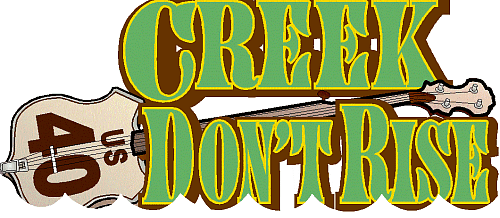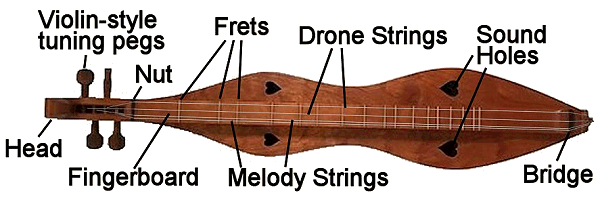
| ||||||||||||||||||||||||||||||||||||||||||||||||||||||||||||||||||||
Appalachian Dulcimer - Introduction Sometimes called "mountain" or "lap" dulcimer, Appalachian dulcimer is a fretted stringed instrument that you usually play with it lying in front of you, most often across your legs, though some folks play it standing up, with the thing resting on a special stand. Sometimes called "mountain" or "lap" dulcimer, Appalachian dulcimer is a fretted stringed instrument that you usually play with it lying in front of you, most often across your legs, though some folks play it standing up, with the thing resting on a special stand.
This instrument evolved in hard-to-reach regions of Appalachia among the Scotch-Irish settlers and their offspring. It is especially suited toward the kind of modal ballads those folks brought with them and continued to keep singing right up until the invasion of the radio.
At the right, Jean is shown in a cover photo to a book she wrote about dulcimers and people who played them. The dulcimers belong to her, her friends, and her friends' friends, just to show the variety that has been produced. Since the Appalachian dulcimer was exposed to the "outside world," may fans of traditional and acoustic music have adopted it, though they have also pushed for updates that made them easier to tune, to play in other keys without using modal scales, and to play chords, something Jean never did to speak of. For a more detailed history of the Appalachian dulcimer, click here. The following diagram shows the basic parts of a traditional dulcimer.  Note: Many traditional Appalachian Dulcimers have only one melody string. If they have two melody strings, they are tuned to the same note. The next diagram shows a more modern instrument. The primary differences are:
 The "zero fret" is just the way some builders make certain their intonation is sound. It's not, technically a feature. Again, there is a very detailed explanation of why these changes occurred in our Appalachian Dulcimer - History article. The following diagram shows another modern dulcimer. This one has a teardrop shape and guitar-style tuners. However it also shares the extra frets with the dulcimer shown just above.  Many other shapes have been tried, but these are the most popular. Other ResourcesAs we add articles and "vet" other resources that you may find helpful, we will be adding them here.
More to ComeThere is much to know about these instruments, and we won't be able to do more than "scratch the surface," but people do keep coming to us with questions, so we plan to use this page as a place as an index to future articles.Stay tuned!
And please stay in touch! All material, illustrations, and content of this web site is copyrighted ? 2001, 2002, 2003, 2004, 2005, 2006,
For questions, comments, suggestions, trouble reports, etc. about this page or this site, please contact us.
|
||||||||||||||||||||||||||||||||||||||||||||||||||||||||||||||||||||